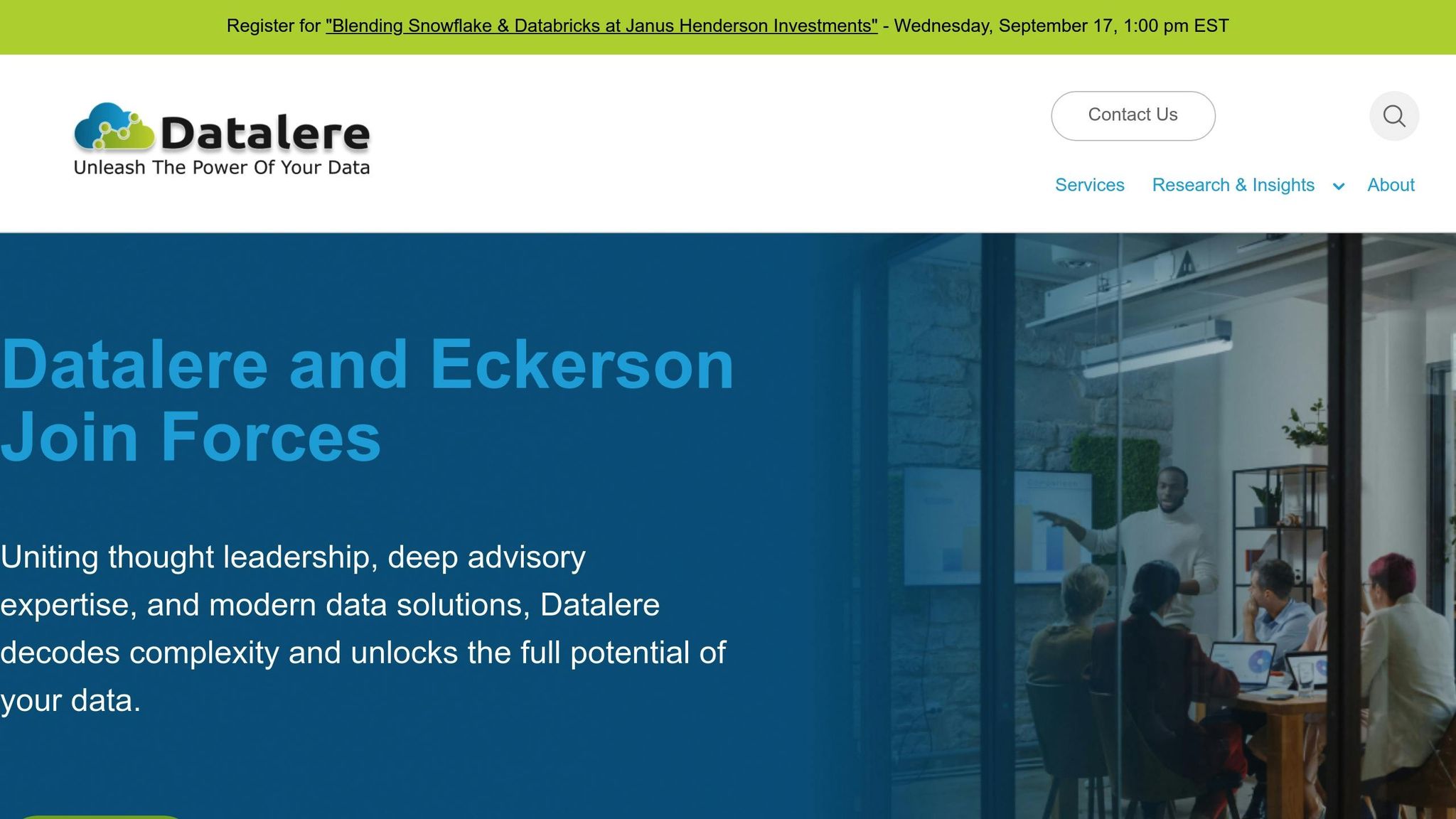To protect your business from data breaches, fraud, or compliance penalties, implementing robust access control measures is key. This means controlling who can view, modify, or share financial information while ensuring employees can work efficiently. Here's what you need to know:
- Why It Matters: Financial data breaches can lead to stolen funds, tampered records, or loss of trust. Regulatory frameworks like SOX and PCI DSS require strict access controls.
- Common Challenges: Balancing security and efficiency, managing permissions across multiple systems, and staying compliant with evolving regulations.
- Core Principles:
- Least Privilege: Grant access only as needed for specific roles.
- Separation of Duties: Divide responsibilities to reduce fraud risks.
- Regular Reviews: Periodically update and revoke unnecessary permissions.
- Tools to Use:
- Role-Based Access Control (RBAC): Simplifies permission management by assigning roles.
- Multi-Factor Authentication (MFA): Adds a second layer of security.
- Policy-Based Access Control (PBAC): Adjusts permissions dynamically based on context.
- Monitoring and Auditing: Continuous monitoring, regular audits, and user behavior analysis help detect and prevent threats.
Data Access Management: Balancing Data Access and Data Security - Eckerson Group Webinar

Basic Principles of Financial Data Access Control
Securing financial data while maintaining smooth operations comes down to three essential principles: least privilege, separation of duties, and regular reviews. These foundational strategies form the backbone of effective access control, ensuring sensitive information remains protected and regulatory requirements are met.
The Principle of Least Privilege
The principle of least privilege limits employees' access to only what they need to perform their jobs. By restricting permissions, you reduce the risk of data breaches and minimize potential damage from compromised accounts.
For example, an accounts payable clerk shouldn’t have access to payroll data, just as the sales team doesn’t need to see detailed financial statements. Each role is granted access tailored to its specific responsibilities. This focused approach not only reduces accidental exposure but also makes it harder for unauthorized users to exploit multiple systems if they gain access to one account.
To implement this effectively:
- Grant view-only access where possible and reserve write, delete, and administrative permissions for a small group of trusted individuals.
- Limit the ability to create new user accounts or alter system settings to a handful of administrators.
It’s equally important to review permissions regularly. When employees are promoted, move departments, or take on new responsibilities, their access must be updated. Remove outdated permissions before adding new ones to prevent unnecessary accumulation of access rights over time.
Separation of Duties
Separation of duties introduces checks and balances by ensuring no single individual has full control over critical financial processes. This approach reduces the risk of fraud and errors by requiring multiple people to handle sensitive tasks.
For instance, the person approving a purchase shouldn’t also process the payment. Similarly, an employee reconciling bank statements shouldn’t have the ability to initiate wire transfers. Dividing these responsibilities creates oversight, making it harder for fraudulent activities to go unnoticed.
For high-value transactions, establish clear thresholds that trigger additional levels of approval. For example:
- Payments over $10,000 might require two signatures.
- Payments exceeding $50,000 could require approval from a C-level executive.
These thresholds should be well-documented and consistently enforced throughout the organization.
Technology can further support this principle. Many modern financial systems allow you to:
- Require multiple approvals for specific transactions.
- Prevent the same user from both initiating and approving payments.
- Maintain detailed logs of every step in a process.
Additionally, when key financial personnel are on vacation or leave the company, their duties should be distributed among several people rather than assigned to a single replacement. This prevents temporary consolidation of too much authority in one person’s hands.
Regular Access Permission Reviews
Even with strict access controls in place, permissions can accumulate unnecessarily over time. Employees frequently change roles, projects come to an end, and business needs evolve, but access rights often remain unchanged. Regular reviews are essential to clean up outdated permissions and ensure employees have only what they need.
Here’s how to manage this effectively:
- Conduct quarterly reviews of access permissions. Managers should verify that their team members' access aligns with their current responsibilities and remove any unnecessary permissions. Document these reviews, noting what changes were made and why.
- High-privilege accounts, such as system administrators or financial controllers, should be reviewed monthly due to their elevated access to sensitive data.
- Temporary permissions for consultants, auditors, or contractors should have built-in expiration dates. Once a project concludes, revoke these permissions promptly.
Emergency access procedures should also be part of your review process. Clearly document who is authorized to grant temporary elevated permissions, how long these permissions can remain active, and what steps are required to make them permanent if needed. This ensures your team can respond quickly to urgent situations without compromising security.
Setting Up Access Control Measures
To safeguard financial data effectively, it's crucial to implement systems that enforce access control principles like least privilege, separation of duties, and regular permission reviews. A solid security framework often combines role-based access control (RBAC), multi-factor authentication (MFA), and policy-based access control (PBAC). Together, these approaches strike a balance between protecting sensitive information and maintaining smooth operations.
Role-Based Access Control (RBAC)
RBAC organizes employees into roles, each with specific access rights. Instead of managing permissions individually, you assign employees to predefined roles, streamlining the process and reducing errors.
For example, imagine a company with 50 employees spread across various departments. Without RBAC, you’d be managing 50 separate permission sets. With RBAC, you might only need 8–10 well-defined roles, which simplifies administration significantly.
Start by mapping out your financial workflows and identifying key job functions. Design roles based on responsibilities, not just job titles. For instance, you might create separate roles for "Invoice Processor" and "Payment Approver" within the accounts payable team to uphold the separation of duties. This approach ensures access aligns with tasks while keeping management straightforward.
Consider building roles hierarchically. For example, a "Senior Financial Analyst" role could inherit permissions from the "Financial Analyst" role while adding access to advanced tools like budget planning software. This structure ensures consistency as your organization scales.
Document each role thoroughly, detailing which systems the role can access, the actions allowed, and any restrictions. These records are invaluable during audits and help new managers quickly understand team access requirements. To further enhance security, complement RBAC with advanced authentication measures.
Multi-Factor Authentication (MFA)
MFA adds an extra layer of security by requiring users to verify their identity through multiple methods before accessing financial systems. Even if a password is compromised, the second factor prevents unauthorized access.
Typically, MFA combines a password with a smartphone app or hardware token that generates time-sensitive codes. While hardware tokens offer stronger security, they can be more expensive, making them ideal for high-privilege accounts.
Implement MFA for all financial system access - not just for administrators. Even an accounts payable clerk’s account could be exploited for fraudulent payments or data theft. The slight inconvenience of MFA is outweighed by the added protection.
Choose MFA methods that prioritize ease of use. Mobile app push notifications often see better adoption rates compared to SMS codes, which can be delayed or intercepted. For employees in areas with poor cell service, offer alternatives like printed recovery codes.
Tailor MFA policies to balance security with practicality. For example, you might require MFA for high-risk actions like wire transfers but allow trusted devices to stay logged in for routine tasks like expense reviews. Set session timeouts appropriately - financial systems should log users out after 30 minutes of inactivity, while less sensitive applications might allow longer sessions. While MFA strengthens identity verification, PBAC takes security a step further by considering context.
Policy-Based Access Control (PBAC)
PBAC adjusts access permissions dynamically based on factors like time, location, device, and user behavior. This approach provides more nuanced security that adapts to different situations.
Location-based policies are particularly effective for financial systems. For instance, you could allow full access from office networks but require additional verification for remote logins. If an employee attempts access from an unusual location, the system could trigger a security review or temporarily restrict access.
Time-based controls add another layer of security. Restrict access to financial systems outside regular business hours unless explicitly authorized. For example, a payroll processor working at 2:00 AM might trigger an alert, even if they have legitimate access during normal hours. This doesn’t block authorized after-hours work but ensures unusual activity is reviewed.
Device-based policies guard against unauthorized access from unmanaged or compromised devices. You might allow full access only from company-issued laptops with updated security software, while personal devices could be limited to read-only access for specific reports. Maintain an inventory of approved devices and regularly review access logs.
Behavioral analysis policies can flag unusual activity that might indicate a compromised account. If an employee typically accesses a few specific reports each morning but suddenly starts downloading large volumes of data from unfamiliar systems, the system can trigger alerts or require additional authentication.
Start PBAC implementation with monitoring and alerts to establish baseline usage patterns. This helps fine-tune policies before enforcing restrictions. Ensure clear escalation procedures are in place for employees who encounter access issues, so legitimate requests can be resolved quickly.
Modern financial platforms, such as Lucid Financials, integrate these advanced access control features. These systems combine role-based permissions, multi-factor authentication, and adaptive policy controls, allowing businesses to implement enterprise-grade security without requiring complex IT setups.
sbb-itb-17e8ec9
Monitoring, Auditing, and User Behavior Analysis
Once access controls are in place, the next step is to keep a close eye on your financial systems. Monitoring, audits, and user behavior analysis work together to strengthen your data security. Even the best security measures can fall short if threats or unusual activity go unnoticed. Financial institutions are particularly vulnerable, facing three times more cyberattacks than other industries, which makes constant vigilance a must for safeguarding sensitive information.
Continuous Monitoring of Financial Systems
Real-time monitoring offers round-the-clock protection by analyzing activity as it happens, allowing you to catch and address issues before they turn into bigger problems. Modern monitoring tools track various triggers, such as unusual login locations, large file downloads during odd hours, or access patterns that don’t align with typical behavior.
"24/7 monitoring is a critical component of financial cybersecurity, providing continuous surveillance to detect and respond to threats in real-time." - BitLyft
Automated systems can flag actions like transfers that exceed preset limits or unauthorized attempts to access restricted records. For instance, JPMorgan Chase uses a machine learning platform to monitor transactions in real time, which helped the bank lower fraud losses by 20% in 2020.
To make monitoring effective, configure alerts that align with your organization’s risk tolerance. For example, you might set alerts for wire transfers over $50,000 while opting for daily summaries for smaller transactions. The goal is to strike a balance - catching real threats without overwhelming your team with unnecessary notifications.
User sessions are also monitored to detect unusual activity, such as extended login durations or unexpected device usage. Spotting these patterns early can prevent account compromises before any damage is done.
While real-time monitoring focuses on immediate risks, regular audits provide a deeper look at security weaknesses.
Regular Security Audits
Pair continuous monitoring with regular audits to uncover long-term vulnerabilities and verify that your security controls are doing their job. While monitoring addresses immediate threats, audits help you understand broader issues and ensure your systems are running as intended.
Plan to conduct comprehensive audits at least quarterly, with more frequent reviews for high-risk areas like wire transfers or customer data storage. Audits should examine both technical systems and human behavior. Even the best technology can be undermined by simple mistakes, such as employees sharing passwords or leaving workstations unattended.
During audits, review access logs to spot patterns automated systems might miss. For example, look for employees accessing systems outside their job scope or dormant accounts that still have active permissions - both of which can become vulnerabilities.
Thorough documentation is key. Record your findings and create actionable steps to address any issues. For instance, if accounts payable staff have unnecessary access to payroll systems, set a timeline to remove those permissions and assign someone to oversee the process.
Compliance audits are equally important. Financial regulations like SOX or PCI DSS come with steep penalties for non-compliance, so ensure your access controls meet the required standards. Keep detailed records of who accessed which data and when, as regulators often request this information during reviews.
External audits by third-party firms can also be valuable. These provide an unbiased perspective, identifying blind spots and offering recommendations based on industry trends and threats.
User Access Behavior Analysis
Understanding normal user behavior is another critical layer of security. Employees typically develop predictable patterns - when they log in, what data they access, and how much they download. Behavioral analysis tools learn these patterns and flag anomalies.
"Real-time transaction monitoring is the process of analyzing customer transactions and behavior, which involves the investigation of past and present customer data and interactions to provide a complete picture of their activity, in real-time." - Flagright
For example, if an accounts receivable clerk starts accessing customer credit reports at midnight or a junior analyst downloads years of financial data, these deviations should trigger an investigation. Machine learning enhances these systems by identifying subtle changes, like altered typing habits or unusual file access, which could signal stolen credentials.
Behavioral analysis works best when paired with other controls like role-based permissions and multi-factor authentication. Training employees to report suspicious activity is also crucial. Often, coworkers are the first to notice unusual behavior, so establish clear, non-punitive channels for them to share concerns.
Create baseline behavior profiles for different roles. A CFO’s access to sensitive systems will naturally differ from that of an accounts payable clerk. Customizing monitoring thresholds based on job responsibilities reduces false alarms while maintaining strong security.
When anomalies are flagged, investigate quickly and fairly. Sometimes, there’s a simple explanation - like an employee working on a special project. Document these investigations to refine your systems and show due diligence during audits.
Modern platforms combine behavioral analysis with other security measures for a comprehensive approach. For instance, Lucid Financials integrates user behavior monitoring with transaction analysis, helping businesses detect threats while keeping daily operations running smoothly.
Using Technology for Financial Data Security
Today's technology plays a crucial role in protecting financial data, combining advanced systems with intelligent automation to address modern security challenges. By integrating artificial intelligence and robust security measures, businesses can shift from simply reacting to threats to actively preventing them. For startups and growing companies, the right tools can make all the difference, offering real-time protection and seamless system integration.
Real-Time Insights and Automation
Automation significantly reduces the risk of human error, a common cause of security vulnerabilities. When employees manually manage processes, issues like outdated permissions or misconfigurations can slip through the cracks. AI-powered systems are designed to catch these problems early.
Real-time processing is a game-changer for identifying and responding to threats. Instead of waiting for periodic audits to detect unauthorized access, these systems flag suspicious activity within minutes - a critical advantage when dealing with sensitive financial data.
For example, Lucid Financials integrates with Slack to provide real-time financial insights. Team members can instantly access information, while the AI ensures that the data is accurate and only visible to those with proper permissions.
Automation also streamlines tasks like transaction monitoring and reconciliation. Instead of requiring multiple employees to sift through raw financial data, AI handles these processes efficiently while maintaining strict access controls. Lucid Financials, for instance, can reconcile financial records in just seven days, significantly limiting the number of people who need direct access to sensitive information.
Predictive analytics further strengthens security by identifying unusual patterns early. AI systems learn what "normal" looks like for a business and flag deviations automatically. For example, if a transaction seems out of the ordinary, the system alerts administrators immediately, allowing for swift action. These insights integrate seamlessly with other systems, enhancing overall financial data security.
Integration with Existing Systems
Smooth integration between platforms is essential to avoid security gaps. Switching between multiple systems often creates vulnerabilities, such as shared passwords, inconsistent controls, or unsecured data storage.
Lucid Financials' Slack integration is a great example of effective connectivity. Instead of logging into various financial platforms, team members can access the information they need directly through Slack. For instance, a founder can quickly check spending or runway updates without needing full access to the financial system.
This approach also enforces the principle of least privilege, ensuring employees only access the data they need. A marketing manager, for example, could ask about the advertising budget via Slack, and the AI would verify permissions before providing the information - all while keeping detailed audit logs.
Integration with accounting platforms further enhances security. By linking systems, access controls remain consistent across all tools. If a user’s permissions are updated in one platform, those changes automatically apply elsewhere, ensuring unified oversight. For businesses managing multiple entities, integrated systems offer a single dashboard to monitor access across subsidiaries, making it easier to spot potential issues.
AI-Powered Access Management
Artificial intelligence takes access management to the next level, transitioning from manual oversight to proactive security measures. Traditional systems rely on administrators to review permissions periodically, but AI continuously analyzes access patterns and adjusts security protocols in real time.
Behavioral learning allows AI to recognize normal user behavior. For instance, if the CFO typically accesses reports during business hours, an attempt to log in late at night might trigger extra verification steps. This ensures security without unnecessarily blocking legitimate access.
Risk-based authentication tailors security requirements to the sensitivity of each request. For example, viewing a monthly summary might require a simple login, but downloading detailed transaction data could prompt multi-factor authentication. AI evaluates these scenarios instantly, factoring in user roles, data sensitivity, and current risks.
Compliance is another area where AI shines. By automating the monitoring of access logs and generating reports, AI simplifies regulatory compliance. For startups preparing for funding rounds, this means investor-ready reports are always available without compromising security.
Continuous policy optimization ensures access controls stay relevant. AI identifies permissions that are rarely used or redundant and suggests reviews. For example, if an employee hasn’t accessed payroll data in six months, the system might flag that permission for review.
AI works best when paired with human expertise. While automated systems handle routine tasks and detect anomalies, experienced professionals step in to address complex situations. This combination ensures that security measures are both efficient and thoughtful.
Platforms like Lucid Financials illustrate how AI can support, rather than replace, human judgment. By automating repetitive tasks and providing actionable insights, finance teams can focus on strategic decisions and problem-solving - building strong security frameworks while driving business growth.
Conclusion
Protecting financial data starts with core principles: applying least privilege, ensuring separation of duties, and conducting regular reviews. Pair these with advanced tools like role-based access control, multi-factor authentication, and continuous monitoring to create a solid foundation.
From there, advanced technologies can elevate security efforts. AI-powered access management tools, for example, analyze user behavior in real time, detect anomalies, and adjust protocols dynamically. This approach is especially useful for startups and growing businesses that need scalable security solutions to match their expanding operations.
Integrating systems seamlessly is another critical step. Unified security controls close potential gaps across platforms, ensuring that access measures remain consistent no matter how employees interact with financial data. For a practical example of this in action, consider platforms like Lucid Financials.
Lucid Financials combines AI-driven automation with human expertise to enhance both security and efficiency. With features like Slack integration, real-time insights, and strict access controls, the platform delivers clean financial records in just seven days and creates investor-ready reports. It’s a clear example of how technology can simplify complex processes while maintaining robust security.
The challenge lies in balancing security with usability. Employees need access to the data necessary for their roles, but that access must be carefully managed and monitored. By following the strategies outlined in this guide - from foundational practices to cutting-edge AI tools - businesses can safeguard their financial data while ensuring smooth operations.
As your business grows, your security measures must evolve with it. Combining strong foundational practices with intelligent technologies provides a reliable defense against both current risks and future challenges.
FAQs
How can large organizations effectively apply the principle of least privilege to manage complex user roles?
To put the principle of least privilege (PoLP) into action within large organizations, especially those with complex user roles, the first step is to define access levels clearly. These should align with specific job roles and responsibilities. By implementing Role-Based Access Control (RBAC), you can ensure that users only have the permissions they need to perform their tasks - nothing more.
It's also crucial to routinely review and adjust access rights as roles and responsibilities evolve. For tasks requiring elevated privileges, using just-in-time (JIT) access can limit exposure to sensitive systems. Pair this with continuous monitoring and auditing to quickly identify and address any vulnerabilities.
Another key practice is segregation of duties, which prevents any single individual from having too much control over critical systems or processes. Together, these measures strengthen security, ensure compliance, and support smooth operations.
What are some signs that a user account may be compromised?
Some red flags that might suggest a compromised account include logins from locations you don’t recognize, password reset notifications you didn’t initiate, and suspicious actions from users with elevated privileges. Other warning signs could be transactions you don’t recognize, odd behavior from connected devices, or a spike in outbound network traffic that doesn’t match usual patterns.
Keeping an eye out for these signs can help you act quickly to address potential security issues and safeguard your financial information.
How can businesses ensure strong access controls without disrupting daily operations?
To keep access controls effective without disrupting daily operations, businesses can implement role-based access control (RBAC) and adaptive authentication. These approaches limit employees' access to only the information necessary for their roles, helping reduce security risks while avoiding unnecessary hurdles.
It's also crucial to routinely audit and update access permissions. This practice helps spot outdated or excessive access rights, ensuring workflows stay both secure and efficient. By blending automated tools with consistent oversight, companies can safeguard financial data while ensuring smooth operations.


